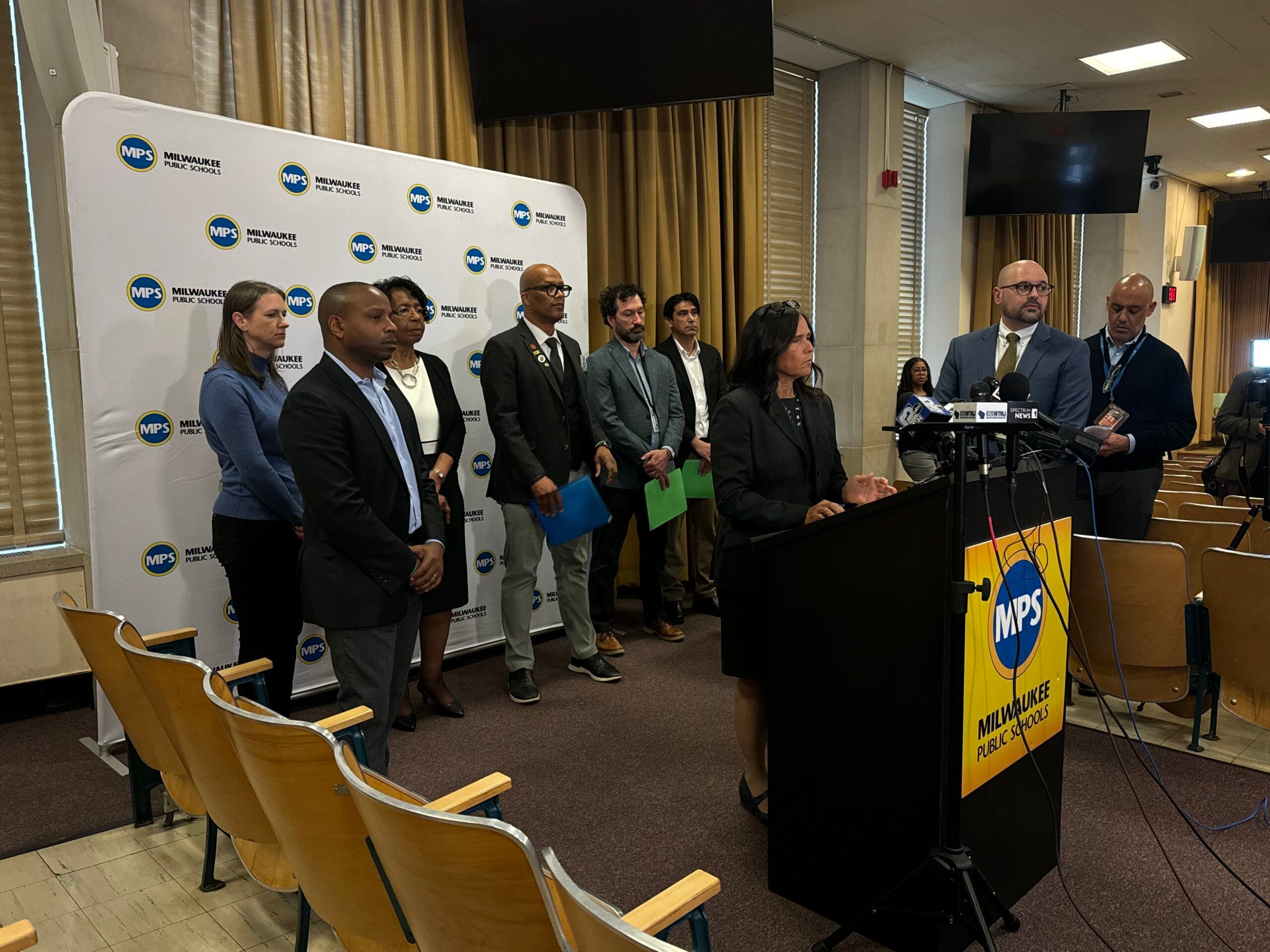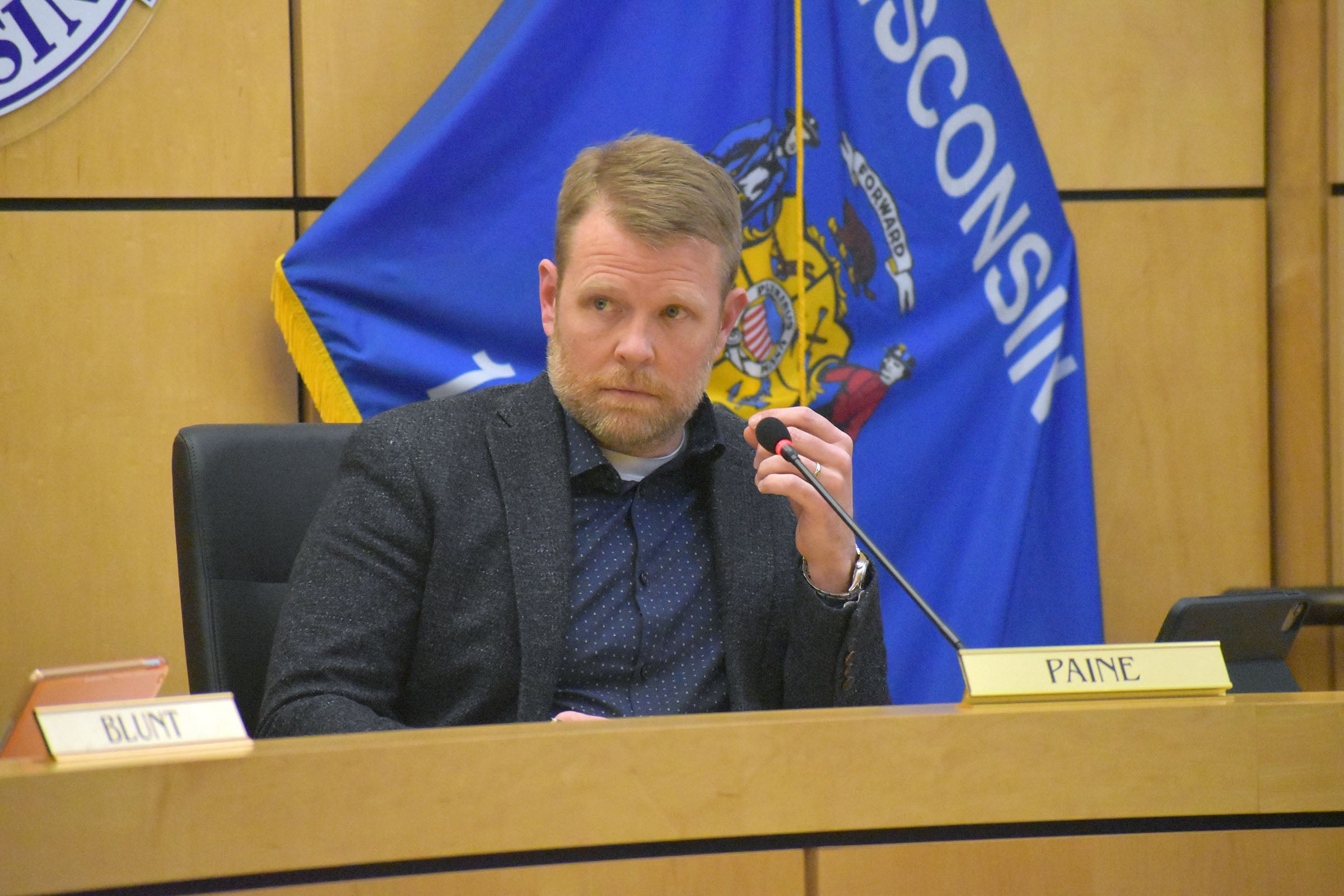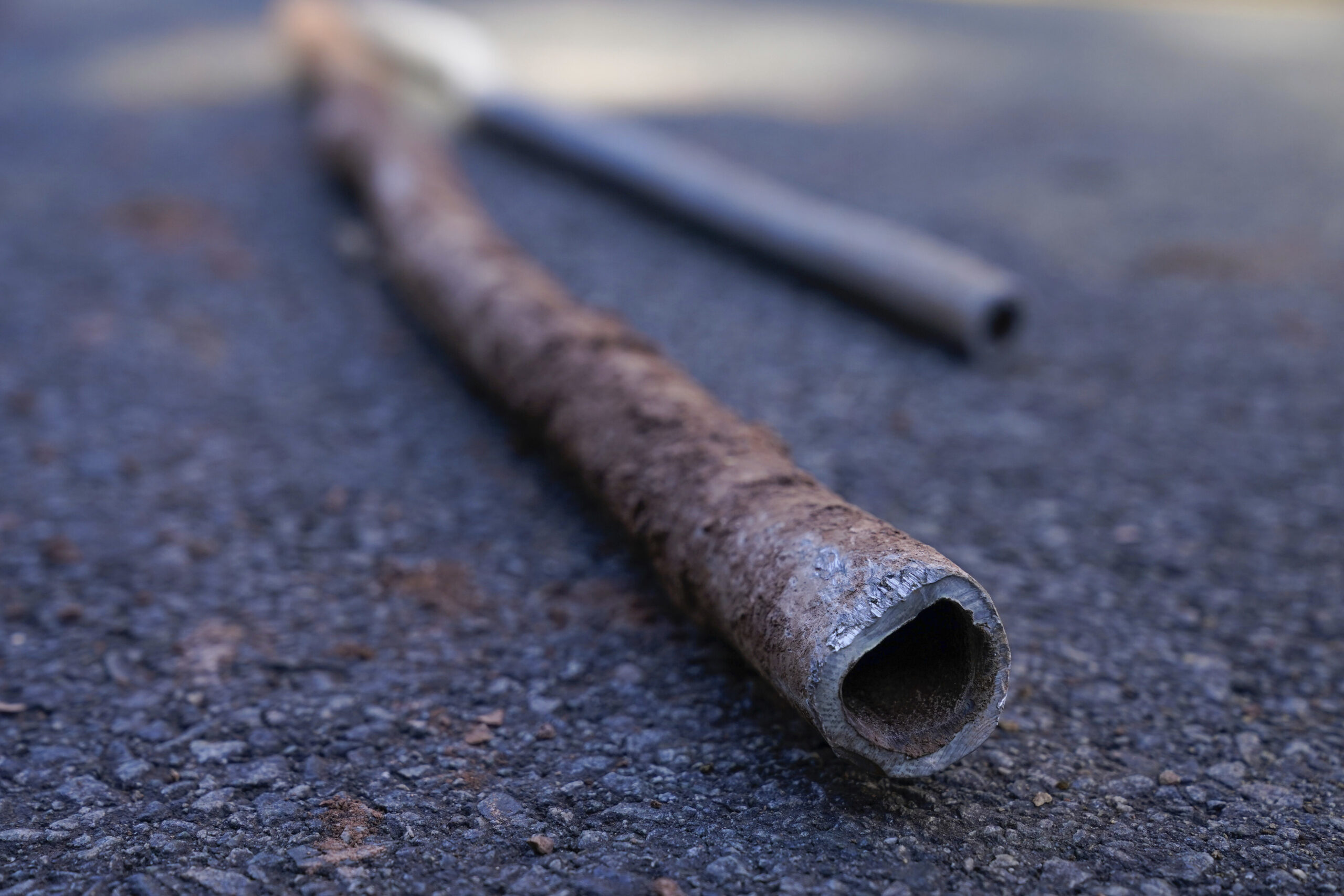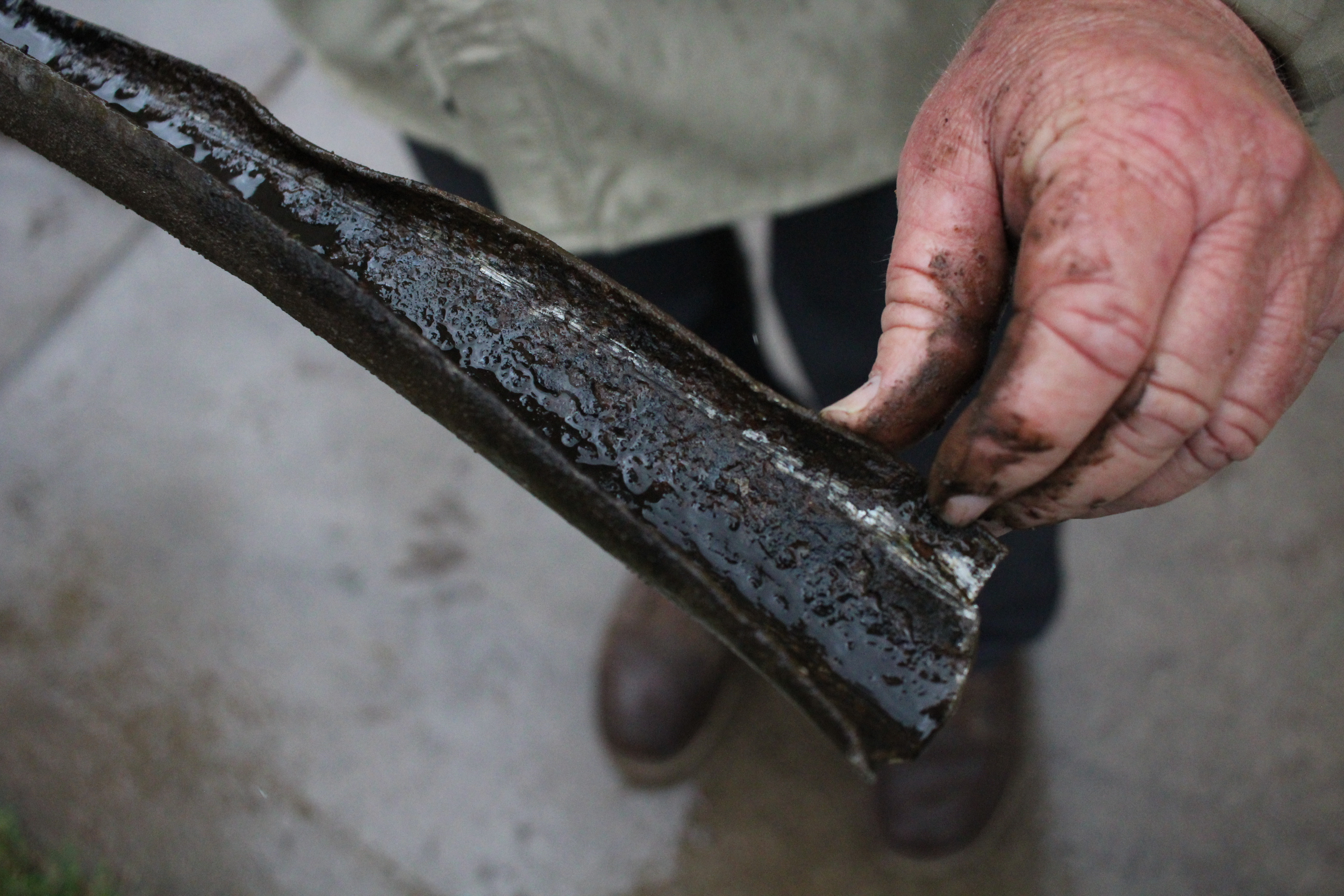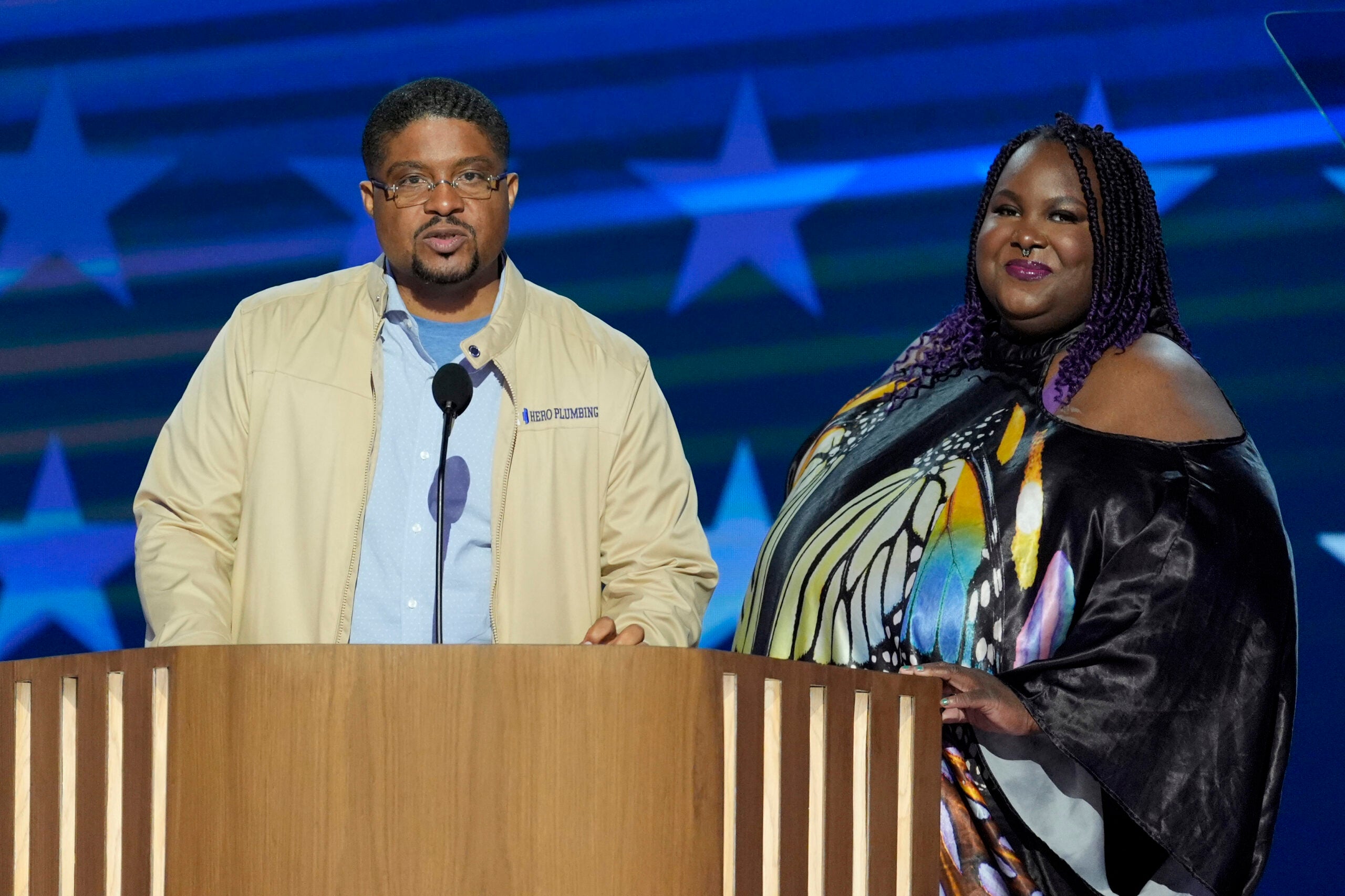Rashawn Spivey has been repairing lead pipes for a long time. He started “riding on the plumbing truck” on the North Side of Milwaukee when he was 6 years old.
“I started out just holding the light in the basements, like, when they would be replacing a water heater, and then it went from there,” the master plumber said.
Spivey founded his own company, Hero Plumbing, in 2010.
Stay informed on the latest news
Sign up for WPR’s email newsletter.
“Starting in 2017, the rule changed that we could no longer repair them. They all had to be replaced whenever they leaked,” he said.
The federal government has been escalating its battle against lead water pipes since that 2017 Environmental Protection Agency rule.
On Tuesday, Spivey was in the crowd as President Joe Biden visited Milwaukee to announce the latest, and possibly final, attack: an EPA rule requiring local governments to replace all lead service lines by 2037. The rule is backed by $2.6 billion from the EPA’s budget for water infrastructure investments.
Biden walked into Milwaukee’s cavernous Public Works Field Office to chants of “Thank you, Joe!” from a small crowd featuring members of multiple labor unions.
It was Biden’s seventh visit to swing state Wisconsin this year and came only four weeks before the presidential election, where his vice president, Kamala Harris, will face Republican candidate and former President Donald Trump.
“There’s no safe, no safe level of lead exposure. Period. None,” Biden said. “And the only way forward is to replace every lead pipeline and connect the American people to clean water.”
The EPA and the Centers for Disease Control and Prevention both say there is no safe amount of lead in drinking water.
“That’s why Kamala and I are the first administration to take on the challenge once and for all, and we’re delivering. We know safe, clean drinking water is fundamental to the health of our communities, to enhance their economic growth, to basic human dignity,” Biden said.
The rule targets service lines, the pipes that run from central water mains to individual homes. In Wisconsin, municipalities own the portion of the pipe that runs from the street to the curb, and property owners have the part that extends to the house.
Biden said $43 million of the new funding for replacement work is heading to Wisconsin.
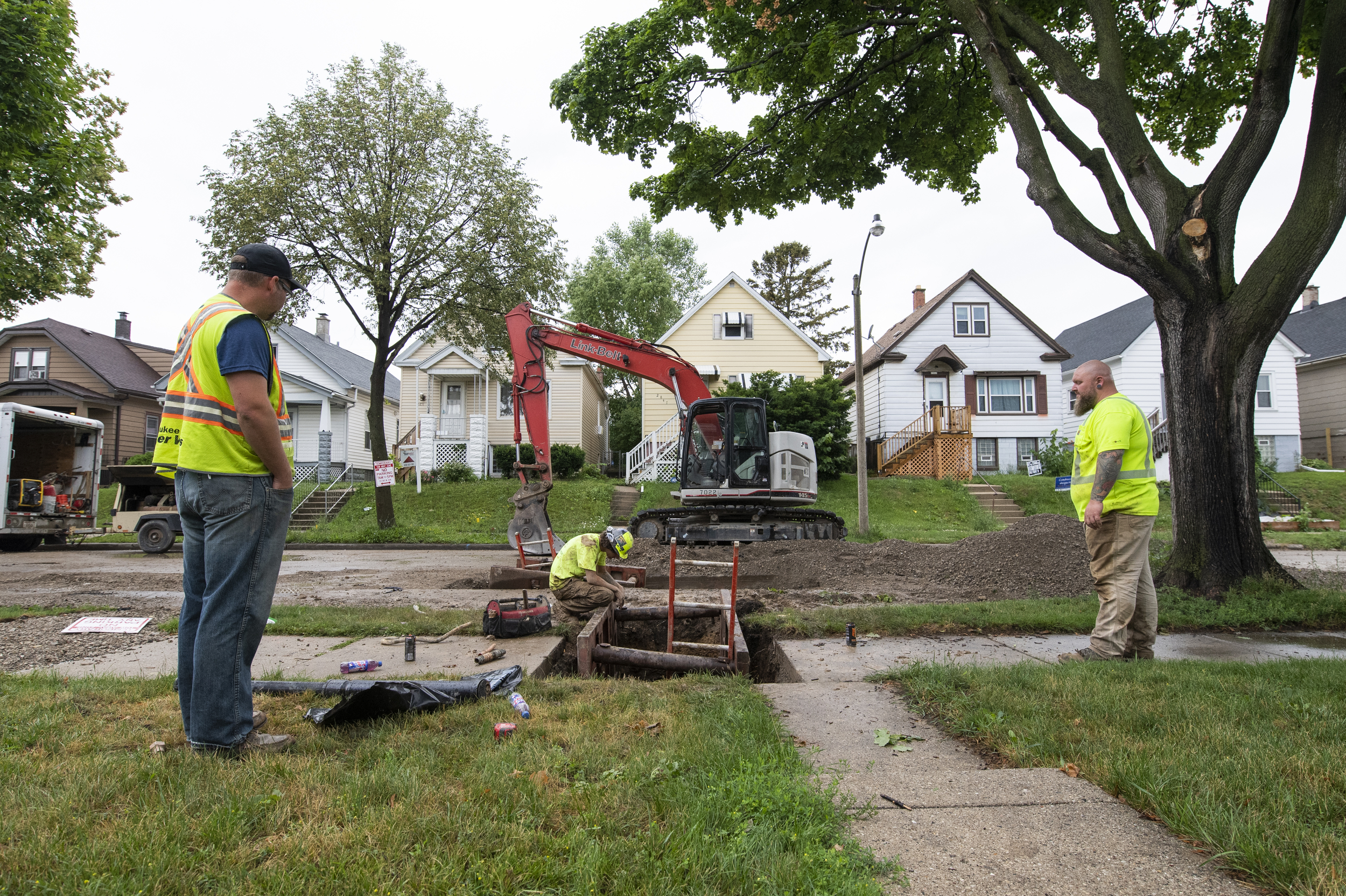
Milwaukee officials discuss progress replacing lead pipes, raise concerns over lead paint
According to data from the Natural Resources Defense Council, the city of Milwaukee has the most lead service lines in Wisconsin by far.
Last week, Milwaukee Water Works Superintendent Patrick Pauly updated the city’s Common Council’s Public Works Committee on his department’s progress replacing lead pipes. Since it started the work in 2017, the utility has replaced 8,000 of the city’s 73,000 pipes.
He said his department will likely replace 2,400 pipes in 2024, exceeding its original goal by 200, and that it is budgeting to replace 3,500 pipes in 2025.
“In order to meet that requirement from the EPA, we will have to continue to increase the rate of replacements in 2026 and 2027,” Pauly said of the new rule, which the EPA had already proposed in November 2023.
He also said so far, about 22 percent of property owners don’t consent to Milwaukee Water Works replacing their portion of service lines.
Michelle Natarajan, the utility’s water quality manager, showed alders results of water testing.
She said tests of tap water both before and after lead pipe replacement showed contamination well below the EPA “action level” that indicates lead corrosion controls aren’t working.
“Historical data does show that even with a lead service line, our corrosion control treatment is very effective,” Natarajan said.
Natarajan also said that the utility, with the Milwaukee Health Department, has tested tap water in 16 homes where children had high levels of lead in their blood. She said those tests showed lead pipes were not to blame.
“We believe that this is primarily driven by other sources of lead, such as paint and dust,” she said.
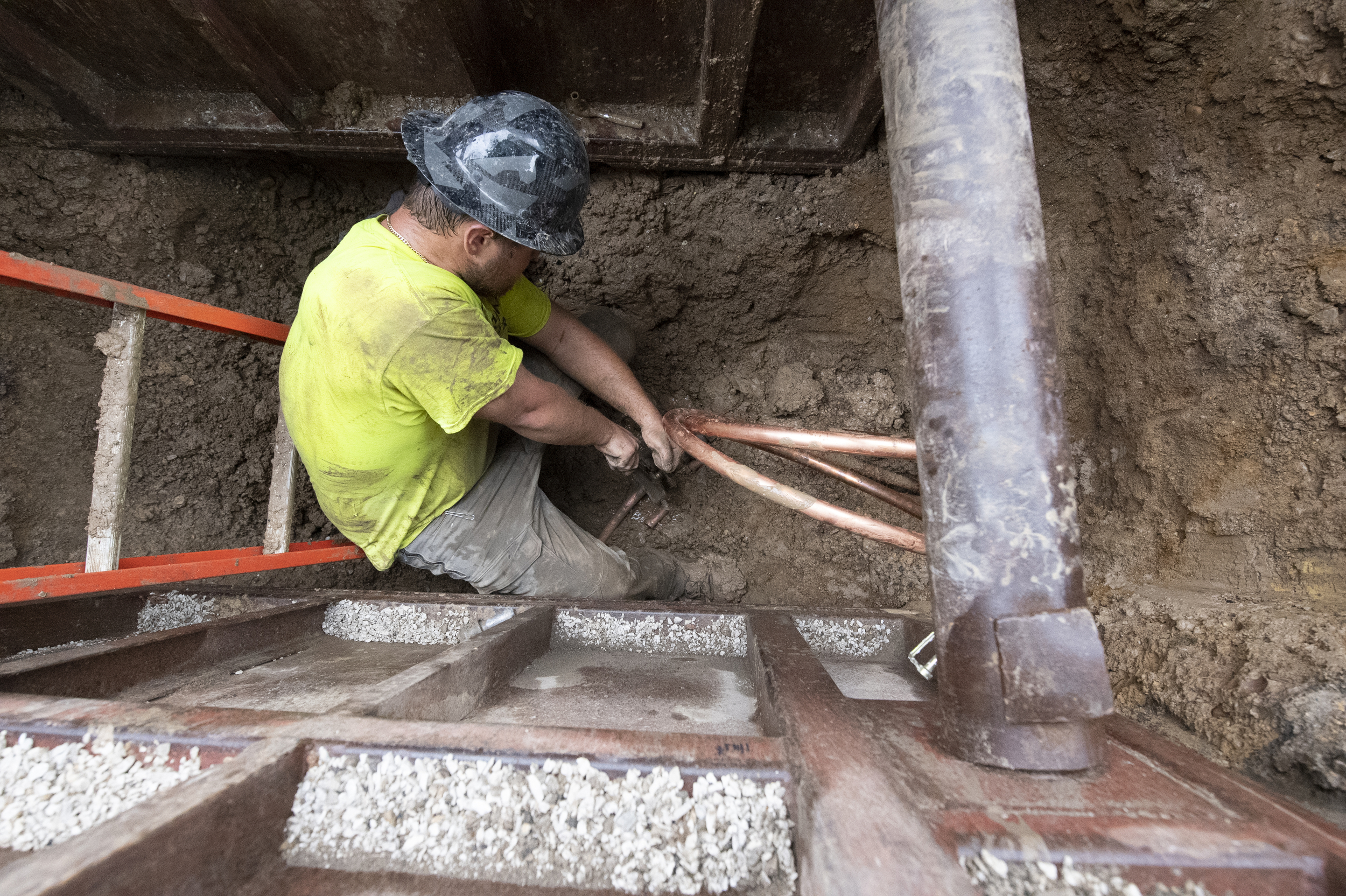
The Wisconsin Department of Health Services says the main source of lead poisoning is from flakes of lead paint and varnish collecting in household dust.
“We struggle, as I believe the Health Department does, with the focus falling to water, which is really a disservice to the community if we are not emphasizing the risks from the other contributors,” Pauly said.
“People have a false sense of security — oh, everything’s fine now — except the paint is still peeling off the windowsill!” alder Robert Bauman responded.
Yesterday, Milwaukee and Kenosha counties received almost $13 million in Department of Housing and Urban Development grants for lead paint abatement in older housing stock.
The sentiment was not lost on speakers at Biden’s appearance. Milwaukee County Executive David Crowley said “we must also address lead paint. It is the leading cause of lead poisoning in our area.”
In a statement, Trump campaign spokesperson Jacob Fischer said, “Joe’s visit is another sickening reminder that a Kamala presidency would be another four years of historic inflation and high prices.”
Wisconsin Public Radio, © Copyright 2025, Board of Regents of the University of Wisconsin System and Wisconsin Educational Communications Board.

